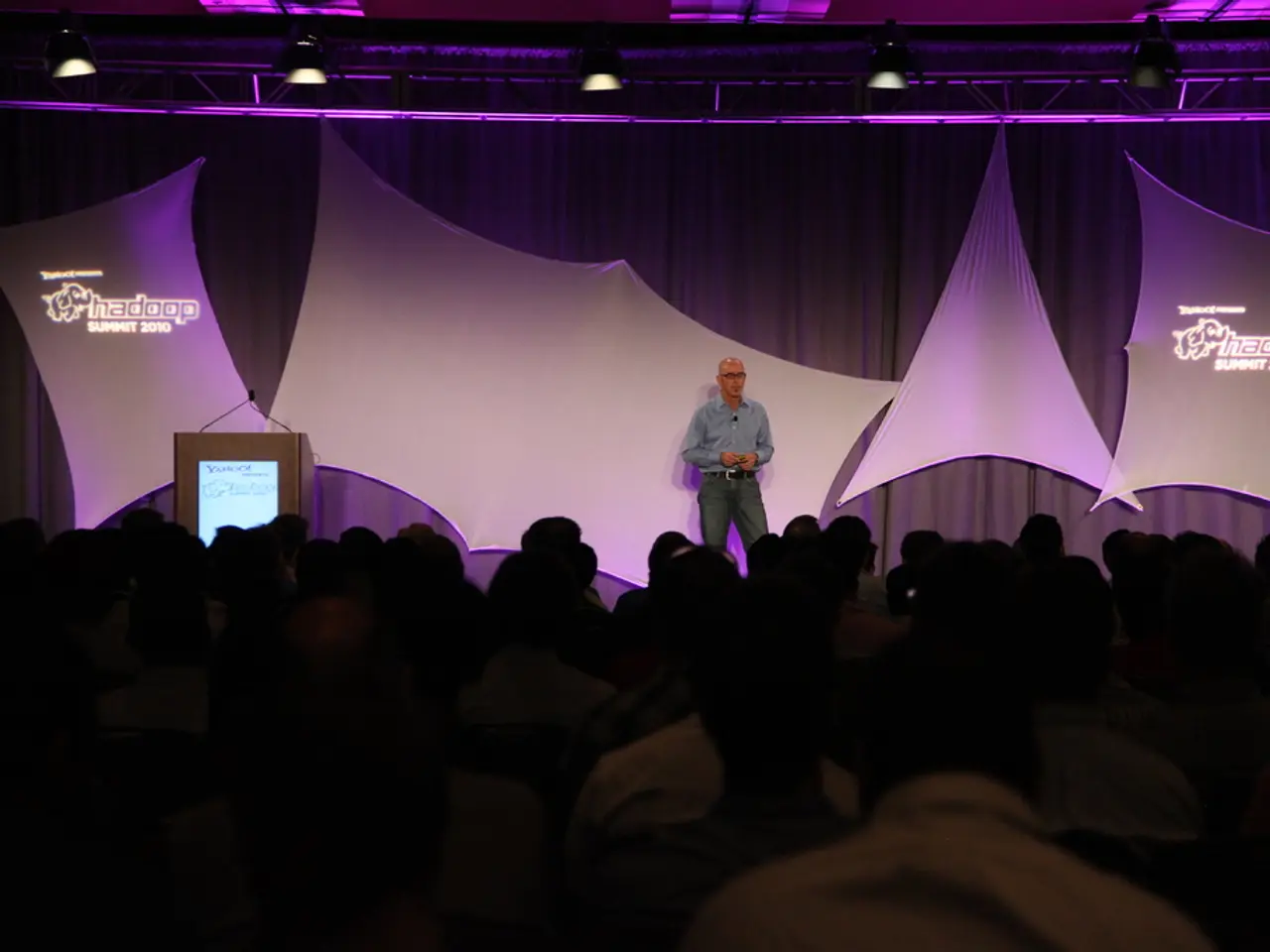Renowned theater director Robert Wilson passes away at the age of 83, leaving behind a passionate fanbase within the art world.
Robert Wilson, a towering figure in experimental theater and multidisciplinary performance, spent over five decades pushing the boundaries of traditional narrative and theatrical conventions. Born in Waco, Texas, in 1941, Wilson's career began in New York City in the 1960s after dropping out of business studies and earning a degree in interior design/architecture from the Pratt Institute.
Wilson founded the Byrd Hoffman School of Byrds performance group in a SoHo loft in 1967, which became a space for people of varied backgrounds to develop their individuality and talents. One of his first performances, Baby Blood (1967), involved Wilson moving across a plank and covering himself in plastic.
Throughout the 1970s, Wilson staged productions not just in the U.S. but also throughout Europe, establishing himself as a leading avant-garde figure internationally. His work during this period was deeply influenced by modern dance pioneers Merce Cunningham and George Balanchine, and he also worked innovatively with physically and mentally impaired people to explore human movement and interaction.
Wilson's unique theatrical language characterized by slow movements, stylized gestures, and striking visual tableaux, often emphasizing light and space over dialogue, began to take shape during this period. This aesthetic, focusing on the sculptural potential of bodies in space, light composition, and time manipulation, would go on to influence generations of experimental theater makers and performance artists.
In 1976, Wilson's production of Einstein on the Beach, an opera, premiered. This nearly five-hour "operatic" piece revolutionized the genre with its non-narrative structure and minimalist aesthetic, becoming a landmark in experimental opera and theater. Other significant works include The King of Spain and several silent operas created with his company.
Throughout his career, Wilson frequently collaborated with notable artists such as Tom Waits, Allen Ginsberg, and even Lady Gaga in later years, blending theatrical direction with other art forms and popular culture. His influence persists in contemporary theater, opera, dance, and interdisciplinary arts worldwide.
In addition to his work in performance, Wilson was recognized as a visual artist, with exhibitions of his drawings, sculptures, and installations at major venues including the Museum of Modern Art and Venice Biennale, where he won the Golden Lion for sculpture in 1993. In 1991, he founded The Watermill Center, a creative laboratory for avant-garde performance and interdisciplinary collaboration that has nurtured new generations of artists and experimental works.
Wilson's death was announced by the Watermill Center in 2024, following a brief but acute illness. His work, characterized by an interest in stillness and slowness, continues to challenge and inspire artists and audiences alike.
Sources: 1. The New York Times 2. The Guardian 3. The Museum of Modern Art 4. The Watermill Center 5. Performing Arts Journal Services
Robert Wilson's unique art, combining theater with interior design, saw him cofounding the Byrd Hoffman School of Byrds in the late 60s. His groundbreaking performances like Baby Blood showcased his experimental approach, with future works such as Einstein on the Beach revolutionizing operatic structures. Wilson's influence spans the art world, with visual arts showcased at the Museum of Modern Art and Venice Biennale, where he won the Golden Lion for sculpture.
His collaborations with artists like Tom Waits, Allen Ginsberg, and Lady Gaga blurred the lines between theater, music, and popular culture. The Watermill Center, a laboratory for avant-garde performance and interdisciplinary collaboration, nurtures new generations of artists, continuing Wilson's legacy after his death in 2024. His work, marked by an interest in stillness and slowness, continues to inspire and challenge artists and audiences alike.
In the art world, performance art is no longer separated from other forms. Artists like Wilson break down conventional boundaries, introducing new forms of entertainment and exhibition, from installations in galleries to drawing and painting assuming a broader role. The fusion of these forms transcends individual art genres, reflecting a more interconnected art scene.








